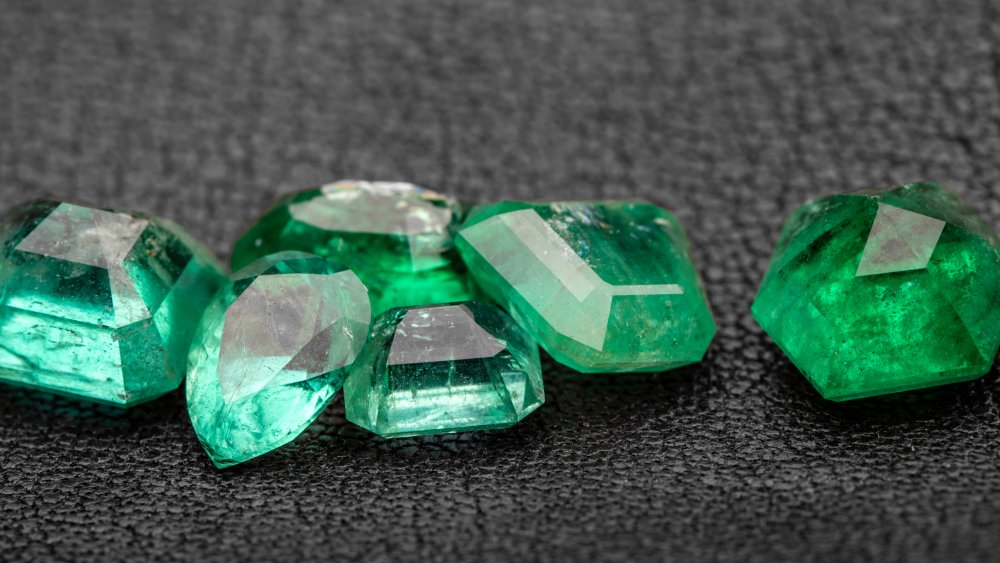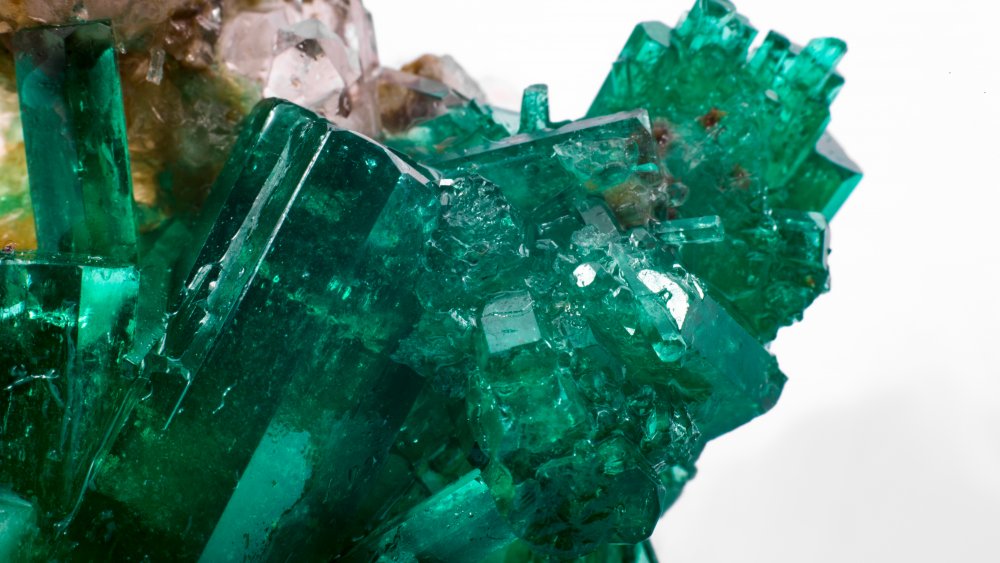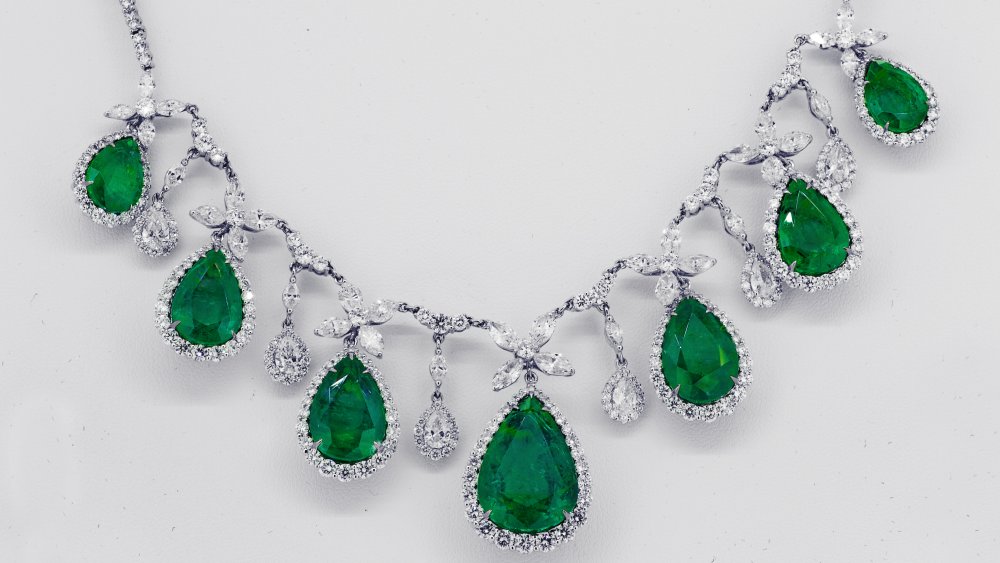The Untold Truth Of Emeralds
Emeralds are the birthstone for the month of May, and they are also said to pave the streets in Oz's capital city. The color of emeralds is used as a comparison for some of the world's most beautiful eyes, and these gems give the country of Ireland and city of Seattle their respective nicknames of Emerald Isle and Emerald City. Emeralds have even lent their name to a Pokemon game.
Emeralds are also one of the world's most precious and valuable jewels. One famous specimen, the Rockefeller Emerald, sold at auction in 2017 for $5.5 million, which works out to about $305,000 for each one of its 18 carats. According to The Telegraph, this set a new world's record for the costliest emeralds. Other legendary emeralds include Elizabeth Taylor's Bulgari jewels, the Chalk Emerald on display at the Smithsonian's National Museum of Natural History, and the 752-pound "cursed" Bahia emerald whose ownership, according to Wired, has long been in dispute and which is said to have ruined nearly as many lives as has the Hope Diamond.
Emeralds have an ancient lineage
The very oldest emeralds are nearly 3 billion years old, but they were first mined about 3,500 years ago in Ancient Egypt. By the time Cleopatra reigned, emeralds were widely used in jewelry, and The Spruce relates that these stones were among her favorite gems. Science Daily adds that emeralds were known to the Romans as well, with Emperor Nero observing gladiatorial combat through an emerald monocle. When 16th-century conquistadors discovered emeralds in South America, they brought some of the gems back to Europe with them, trading them across Europe and Asia.
More than 50 percent of all emeralds these days come from mines in Colombia. Other major producers include Brazil, Zambia, and Zimbabwe, and Ethiopia has recently been starting to produce emeralds of what Geology describes as "exceptional color and clarity." The U.S. has never produced many emeralds, but there have been a few small emerald mines operating in the state of North Carolina since the 1890s. Lab-created synthetic emeralds have also been commercially available since the 1930s.
Emeralds are said to have mystical properties
Gemstones have been used as talismans meant to confer power, wealth, and eloquence, and have also been credited with the power to strengthen memory and sharpen wits. Emeralds were said to be able to cut through illusions and reveal the truth, particularly as it relates to proclamations of love and fidelity. Some mystics claim that emeralds allow them the power to see into the future.
Gem Society relates that in ancient times, emeralds were used by Hindu, Arabic, and Spanish physicians to treat dysentery, infection, and even poisoning. The color of emeralds was also felt to be soothing to the eyes, and lapidaries (gem cutters) were often known to keep emeralds by their workbenches so they could gaze upon them and rest their eyes after long days of squinting into little tiny facets and performing up-close detail work on other gems.
Hindu tradition associates emeralds with the god Krishna and the planet Mercury, while in western mythology the gem is associated with the planet Venus and, by association, with the goddess Venus/Aphrodite. Emeralds even have significance in the Christian tradition, being connected to the Twelve Apostles and said to be among the foundation stones used to build the Heavenly City spoken of in the New Testament's Book of Revelation.


